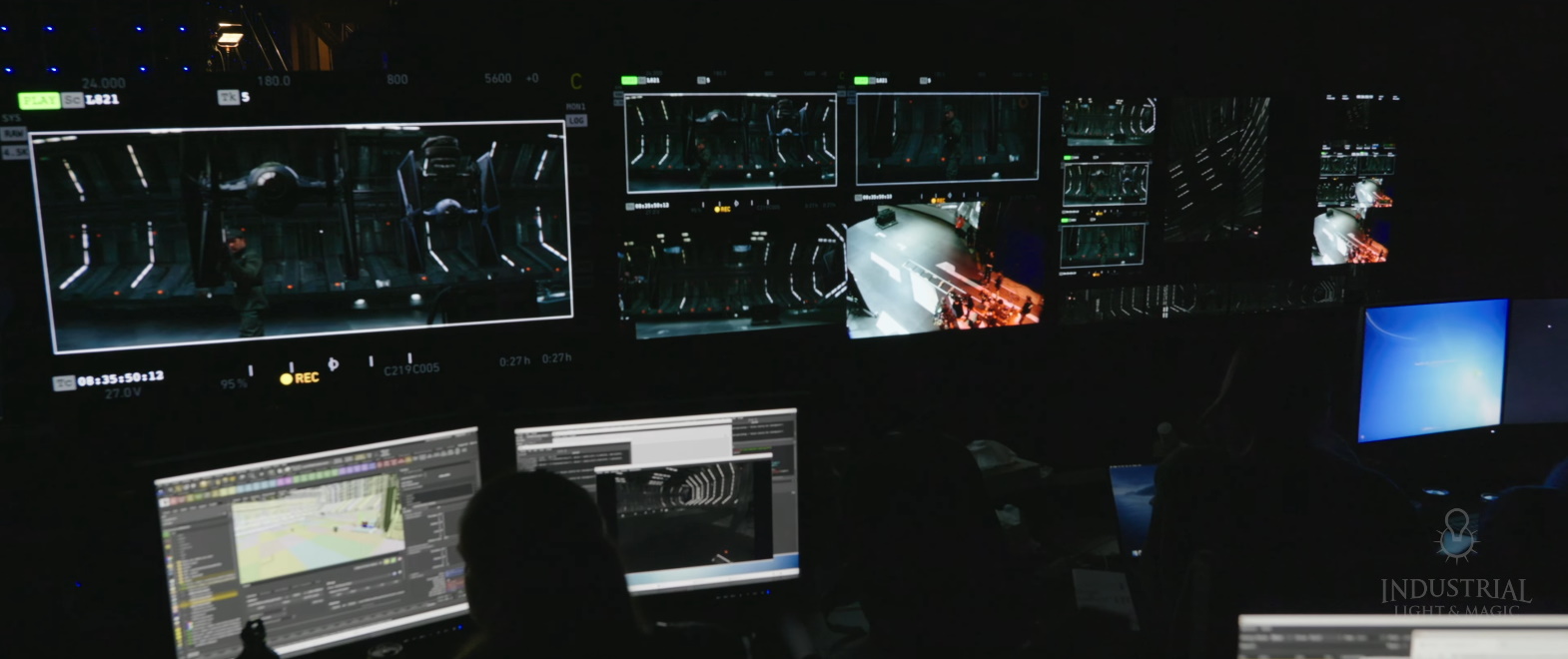The first season of “The Mandalorian” last year wasn’t just a great show, it was the result of an entirely new paradigm in film and TV production. Stagecraft, the enormous LED-wall volume ILM used to shoot that season has since been expanded and updated to be better, faster and easier to use.
In a behind-the-scenes video, directors and others from the production weigh in on how the system makes everything easier, and enumerate the improvements for the 2.0 version.
The most recognizable piece of Stagecraft is “the volume,” an enormous space inside a two stories and a roof of high-resolution LED-based displays. With physical sets placed in the center, the feeling of being in a larger space is real — and if you shoot it right, you can’t tell a virtual background from a real one.
Fundamentally this is huge, allowing “on location” shoots to combine with intricate sets (and regardless of weather or travel schedules), but far more gracefully than the soundstages or portable green screens that actors have stood in front of for decades. Not only that but it pulls together many disparate parts of the production process into one shared process.
“What’s wonderful about this system is now everyone is on the same page,” said Robert Rodriguez, who directed several episodes of the show (as well as numerous films), in the ILM video. “It inspires the actors, it inspires the filmmaker to now see what they’re shooting. You know, it’s like you’re painting with the lights on finally.”
But while it would be difficult to call Stagecraft anything but a rousing success, it’s still very much a work in progress. As an end-to-end system it must integrate with dozens of renderers, color suites, cameras, pre- and post-production software, and of course the LED walls themselves, which are always improving.
“By the second season, ILM developed some software that was specific to this technology and to what the hardware was capable of,” said Jon Favreau, executive producer of the show and indefatigable patron of new technology in cinema.
There were lots of specific requests from various members of the team, plus the usual bug squashing and performance improvements, leading to an improved workflow. Plus the volume itself has gotten bigger and better.
“It also has forced us into having a more efficient workflow that draws pre-production, post-production, production, all into one continuous pipeline,” Favreau said. Not only is it more natural and better looking than ordinary location or green screen techniques, it’s faster — they’re working through 30%-50% more script pages per day, which any producer will tell you is unbelievable.
I plan to dig deeper into the technical improvements and pipelines that ILM, Disney, Unreal and other companies have put together to make this all possible. In the meantime you can watch the behind the scenes video below:
Source: Tech Crunch



